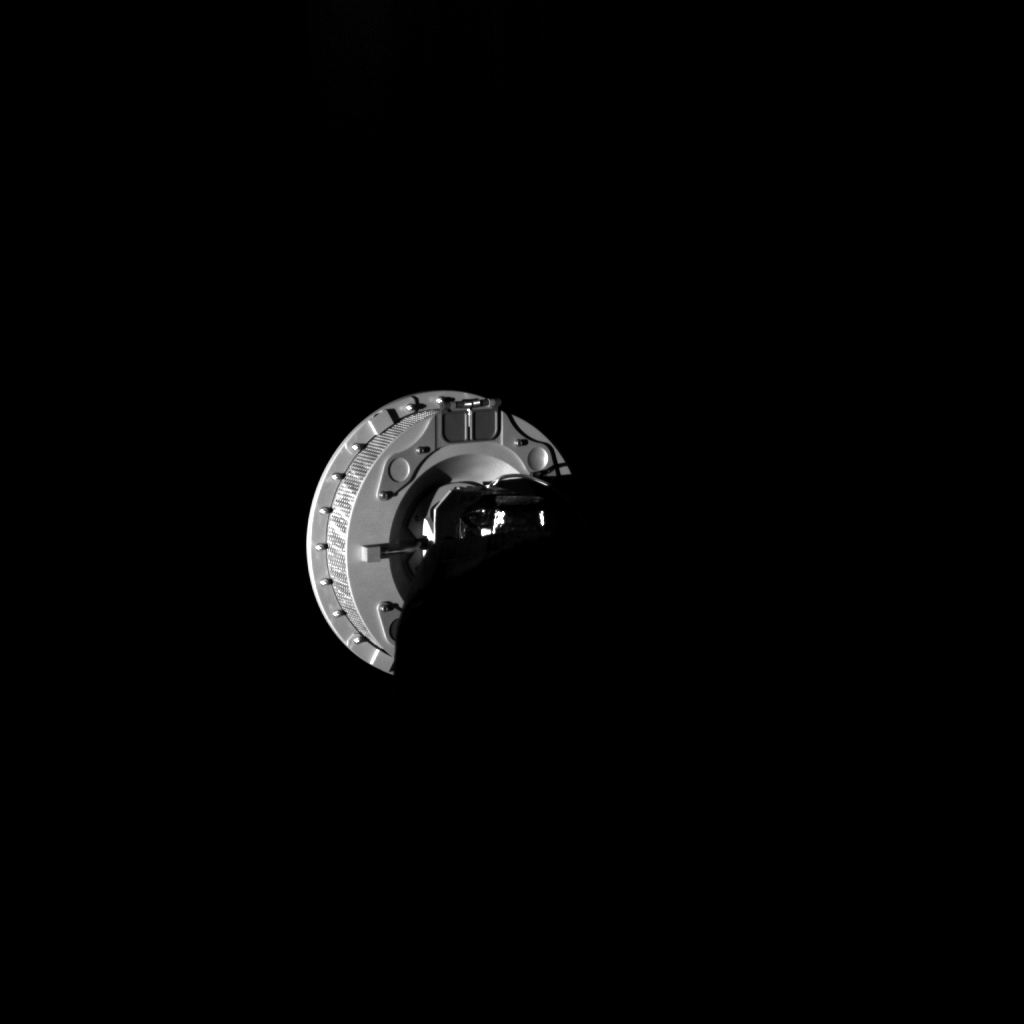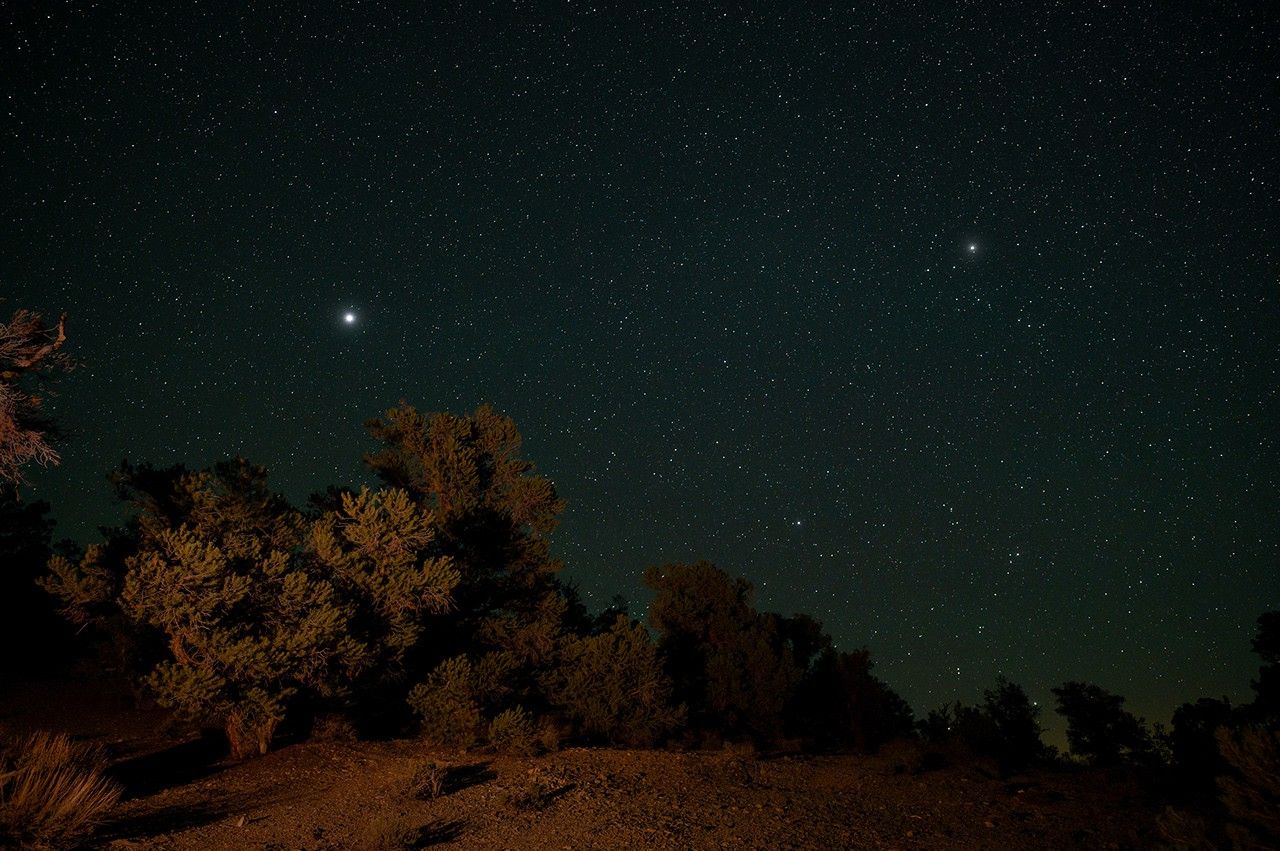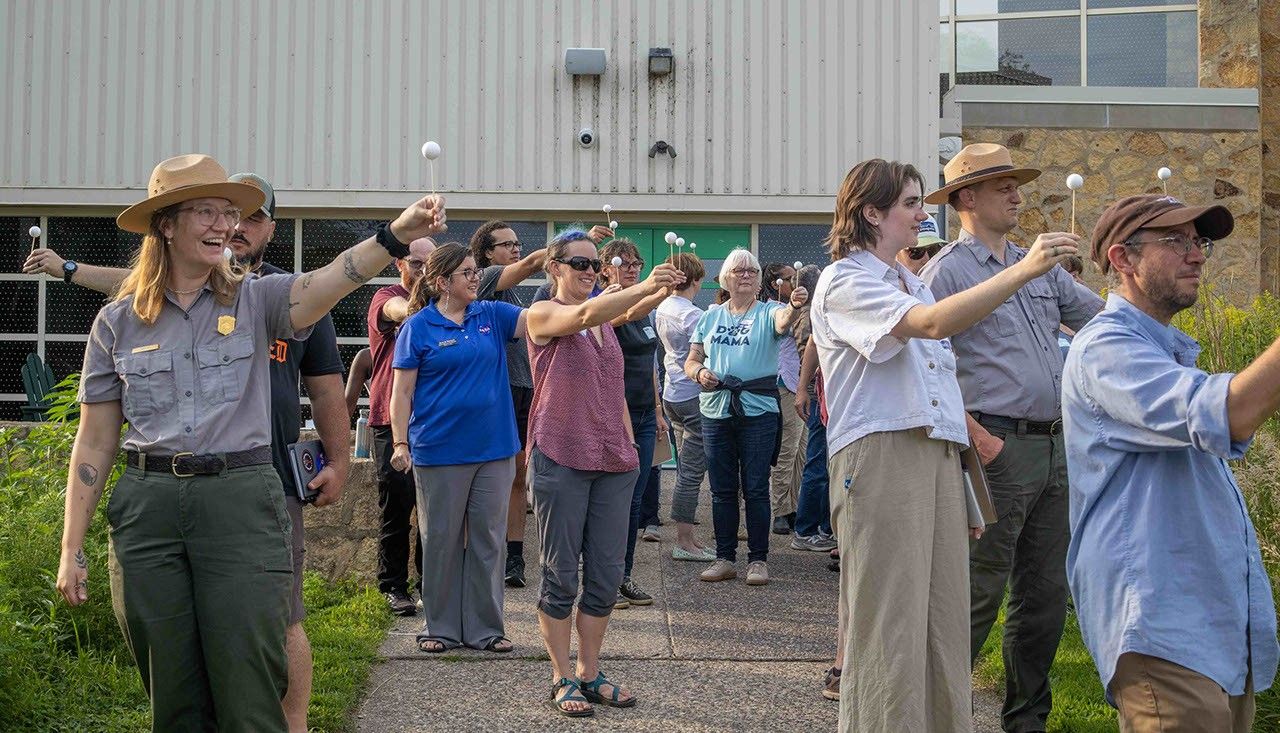On Nov. 14, NASA’s OSIRIS-REx spacecraft stretched out its robotic sampling arm for the first time in space. The arm, more formally known as the Touch-and-Go Sample Acquisition Mechanism (TAGSAM), is key to the spacecraft achieving the primary goal of the mission: returning a sample from asteroid Bennu in 2023.
As planned, engineers at Lockheed Martin commanded the spacecraft to move the arm through its full range of motion – flexing its shoulder, elbow, and wrist “joints.” This long-awaited stretch, which was confirmed by telemetry data and imagery captured by the spacecraft’s SamCam camera, demonstrates that the TAGSAM head is ready to collect a sample of loose dirt and rock (called regolith) from Bennu’s surface.

“The TAGSAM exercise is an important milestone, as the prime objective of the OSIRIS-REx mission is to return a sample of Bennu to Earth,” said Dante Lauretta, OSIRIS-REx principal investigator at the University of Arizona, Tucson. “This successful test shows that, when the time comes, TAGSAM is ready to reach out and tag the asteroid.”
Years of innovation
Lockheed Martin engineers spent more than a decade designing, building, and testing TAGSAM, which includes an 11-foot (3.35-meter) arm with three articulating joints, a round sampler head at the end of the arm that resembles the air filter in a car, and three bottles of high-pressure nitrogen gas.
This test deployment was a rehearsal for a date in mid-2020 when the spacecraft will unfold the TAGSAM arm again, slowly descend to Bennu’s surface, and briefly touch the asteroid with the sampler head. A burst of nitrogen gas will stir up regolith on the asteroid’s surface, which will be caught in the TAGSAM head. The TAG sequence will take about five seconds, after which the spacecraft will execute small maneuvers to carefully back away from Bennu. Afterward, SamCam will image the sampler head, as it did during the test deployment, to help confirm that TAGSAM collected at least 2.1 ounces (60 grams) of regolith.
The TAGSAM mechanism was designed for the key challenge unique to the OSIRIS-REx mission: collecting a sample from the smallest planetary body ever to be orbited by a spacecraft. “First-of-its-kind innovations like this one serve as the precursor for future missions to small bodies,” said Sandy Freund, systems engineer manager and Lockheed Martin OSIRIS-REx MSA manager. “By proving out these technologies and techniques, we are going to be able to return the largest sample from space in half a century and pave the way for other missions.”
A month of testing
The unfolding of the TAGSAM arm was the latest and most significant step in a series of tests and check-outs of the spacecraft’s sampling system, which began in October when OSIRIS-REx jettisoned the cover that protected the TAGSAM head during launch and the mission’s outbound cruise phase. Shortly before the cover ejection, and again the day after, OSIRIS-REx performed two spins called Sample Mass Measurements. By comparing the spacecraft’s inertial properties during these before-and-after spins, the team confirmed that the 2.67-pound (1.21-kilogram) cover was successfully ejected on Oct. 17.
A week later, on Oct. 25, the Frangibolts holding the TAGSAM arm in place fired successfully, releasing the arm and allowing the team to move it into a parked position just outside its protective housing. After resting in this position for a few weeks, the arm was fully deployed into its sampling position, its joints were tested, and images were captured with SamCam. The spacecraft will execute two additional Sample Mass Measurements over the next two days. The mission team will use these spins as a baseline to compare with the results of similar spins that will be conducted after TAG in 2020 in order to confirm the mass of the sample collected.
Although the sampling system was rigorously tested on Earth, this rehearsal marked the first time that the team has deployed TAGSAM in the micro-gravity environment of space.
“The team is very pleased that TAGSAM has been released, deployed, and is operating as commanded through its full range of motion.” said Rich Burns, OSIRIS-REx project manager at NASA’s Goddard Space Flight Center in Greenbelt, Maryland. “It has been restrained for over two years since launch, so it is gratifying to see it out of its shackles and performing well.”
OSIRIS-REx is scheduled to arrive at Bennu on Dec. 3. It will spend nearly one year surveying the asteroid with five scientific instruments so that the mission team can select a location that is safe and scientifically interesting to collect the sample.
“Now that we have put TAGSAM through its paces in space and know it is ready to perform at Bennu, we can focus on the challenges of navigating around the asteroid and seeking out the best possible sample site,” said Lauretta.
NASA Goddard Space Flight Center in Greenbelt, Maryland, provides overall mission management, systems engineering and safety and mission assurance for OSIRIS-REx. Dante Lauretta of the University of Arizona, Tucson, is the principal investigator, and the University of Arizona also leads the science team, the mission’s science observation planning, and data processing. Lockheed Martin Space Systems in Denver built the spacecraft and is providing flight operations. OSIRIS-REx is the third mission in NASA’s New Frontiers Program. NASA Marshall Space Flight Center in Huntsville, Alabama, manages New Frontiers for the agency’s Science Mission Directorate in Washington.
For more information on OSIRIS-REx visit:
and
By Christine Hoekenga
University of Arizona, Tucson, Arizona




























